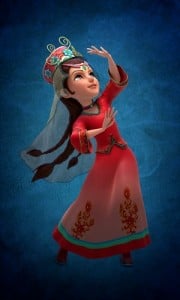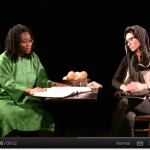Last week, we profiled Abdulaziz Al-Qahtani’s “An Intimate Geography” exhibit at the Lahd Gallery. This week, we sat down for an interview with the artist himself.
Sara for MMW: I noticed that you never explicitly mention Islam in your work. Was this intentional?

Abdulaziz Al-Qahtani: I wanted to move away from Islam, because I do not like to classify based on religion. I do this because I feel as though everyone is spiritual, and that is the best way to be in touch with your inner self. I also wanted to steer clear of stereotypes.
MMW: While the hijab was not a focus of your work, it was still featured. What was it meant to symbolize, or what was its role?
AQ: I showed a hint of everything—religion, belief, culture. Hijab is just a part of what many people wear. I am not really concerned with the political issues around hijab, I just used it in a playful way. The hijab was supposed to represent being Arabian or Middle Eastern.
MMW: What was the central message to this particular exhibition?
AQ: I wanted to critique the double standard that exists. People are expected to follow cultural rules and guidelines like sheep, yet they believe that they are open-minded because they wear ‘cool clothing’. Some believe that things such as drinking or wearing different clothing makes you “progressive” but I disagree with this.
MMW: One criticism I had of the exhibition was that you state that this is meant to represent the Middle East, but I felt as though it might be more representative of the Gulf (your own background). What is your response to that?
AQ: I was critiquing gender roles in general. While there might be a Gulf based theme, I feel as though many of the ideas can be applied to the entire Middle East, such as arranged marriages, or gender roles and responsibilities within a marriage.
MMW: What was your motivation for this particular exhibition?
AQ: Throughout the years, I’ve seen so much. Many of the double standards or taboos are seen, but not spoken about in a formal way. Usually spoken about in whispers, and so I was trying to show the human side of the Middle East, through a visual critique.
MMW: So, the divide between public and private played a large role in your work?
AQ: Yes, I wanted to bring such things out in the open, because they should be discussed.
MMW: So from what you are saying, you seemed to have a particular aim for visitors from Middle Eastern backgrounds. What was your intended impact on non-Middle Eastern visitors?
AQ: I wanted to address an issue. Terrorists are the minority, and there are other people in the Middle East. People are still human, and still impacted by pop culture—and many of the same struggles and cultural experiences.
MMW: Earlier, we spoke a bit about double standards. Could you elaborate on some of these double standards in relation to Islam?
AQ: I am critical of how people allow traditions to change and manipulate religion. Some can make religion appear to be harsh because they read what they want from their respective holy books, and do not look at the entire picture. When religion is manipulated according to tradition, that is when I think many misunderstandings occur, and abuse of religious texts for personal gain. As I mentioned before, I do not like to delve into religion, because I think it is far more important to be spiritual within yourself, rather than focusing on classifying oneself within a particular religion.
MMW: What is the future direction of your work?
AQ: In the future, I will be doing a more photographic series, featuring film and illustrations. I have a controversial perspective that I use to make my argument, and this will be central to my future work.











